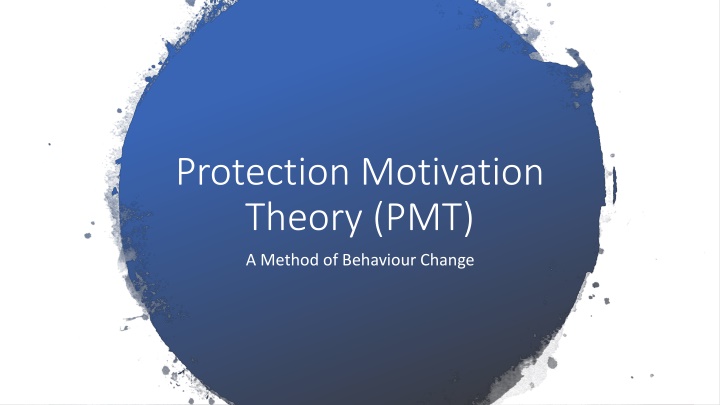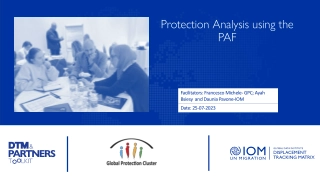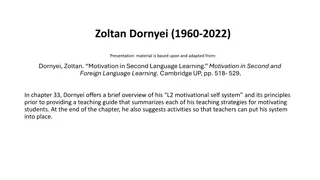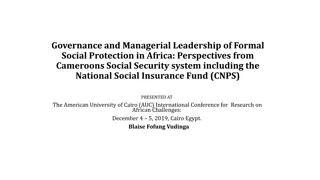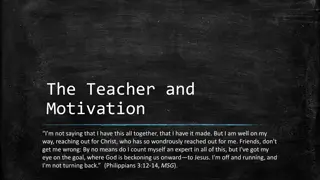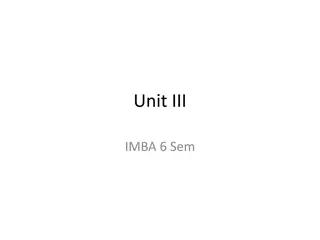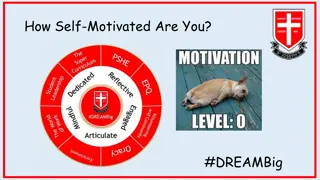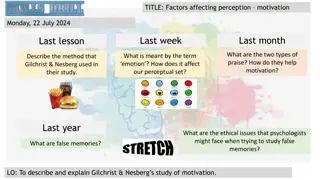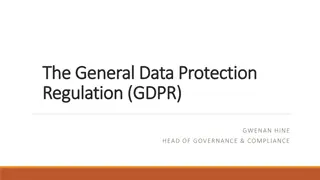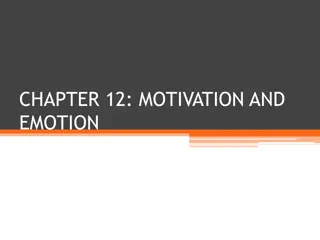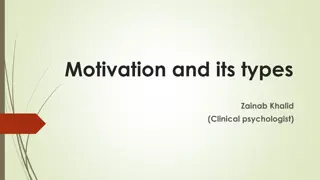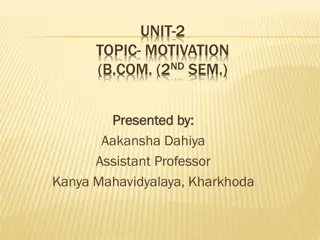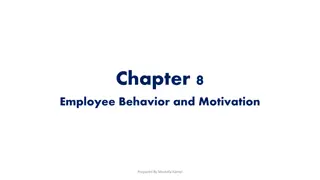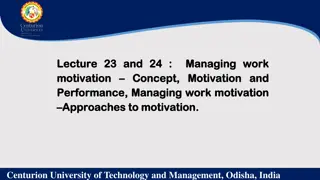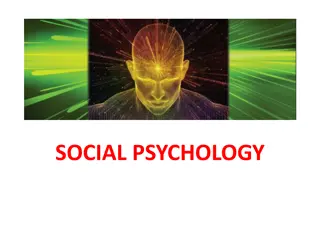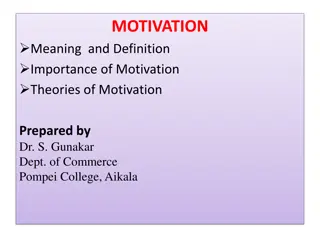Protection Motivation
Protection Motivation Theory (PMT) explores how individuals respond to health threats, either adaptively or maladaptively. By assessing threats and coping mechanisms, people may engage in behaviors to protect themselves. PMT emphasizes the appraisal of threat severity, likelihood, response efficacy, and self-efficacy in influencing behaviors. Examples, such as sugar-sweetened beverage consumption, illustrate how these appraisals can impact decision-making. Utilizing PMT can help enhance understanding of risk perception and behavior change strategies.
Download Presentation

Please find below an Image/Link to download the presentation.
The content on the website is provided AS IS for your information and personal use only. It may not be sold, licensed, or shared on other websites without obtaining consent from the author.If you encounter any issues during the download, it is possible that the publisher has removed the file from their server.
You are allowed to download the files provided on this website for personal or commercial use, subject to the condition that they are used lawfully. All files are the property of their respective owners.
The content on the website is provided AS IS for your information and personal use only. It may not be sold, licensed, or shared on other websites without obtaining consent from the author.
E N D
Presentation Transcript
Protection Motivation Theory (PMT) A Method of Behaviour Change
PMT is describes the way in which individuals react to certain situations when faced with threats to their health (how they cope), in either a positive (adaptive) or negative (maladaptive) manner. For example, knowing that consumption of sugar can lead to tooth decay. Adaptive behaviour I will avoid sugar drinks because they can damage my teeth . Maladaptive Behaviour I will avoid going to the dentist, so I do not have to be reminded about the damage sugar drinks are doing to my teeth . What is PMT?
PMT theorises that when people are faced with a threat, they will access the situation based on two processes or appraisals threat and coping. E.g. Deer in the headlights Threat = Deer sees car coming for him as a threat. Coping = Deer accesses how to get out of the situation. Why do people do things that can harm them?
Threat and Coping Appraisals In the Deer in the headlights scenario, the threat is obvious and coping would have to be done in a split second. PMT suggests that there are two factors from each appraisal (threat and coping) that influence behaviours. For threat, it is believed that people will analyse the severity of a threat (factor 1) and the probability that they are in danger of the threat (factor 2). For coping, it is believed that people will analysis response efficacy i.e. how easy it is to carry out the recommended preventive behaviour (factor 3), and their self-efficacy i.e. the level of confidence in ones own ability to undertake the recommended preventive behaviour (factor 4).
Threat and Coping Appraisal Examples: Sugar Sweetened Beverage (SSB) Consumption Threat appraisal Severity of threat; Drinking sugary drinks can lead to becoming overweight or obese, damage your teeth, and can lead to type 2 diabetes . Threat appraisal Probability of occurrence; People who consume two SSB per day, are 2.4 times more likely to develop type 2 diabetes and 90% of people who have pre-diabetes are unaware of it . Coping appraisal Response efficacy; In order to protect myself from the side effects of SSB consumption, all I have to do is stop drinking them . Coping appraisal Self-efficacy; I do not have the will power to give up SSBs (low self-efficacy).
Threat and Coping Appraisal Poster Example
Severity of threat Making it known that consumption of SSBs can lead to serious health conditions. Highlight ways in which you can combat consumption and while still consuming tasty alternatives Probability of occurrence highlighting the consumption rates that can cause these conditions and the fact that you may not know you are already at risk. Reassure them that reducing sugar consumption will take time, but motivate them by highlighting the positive outcomes.
Online Poster Creation Source https://www.postermywall.com/
